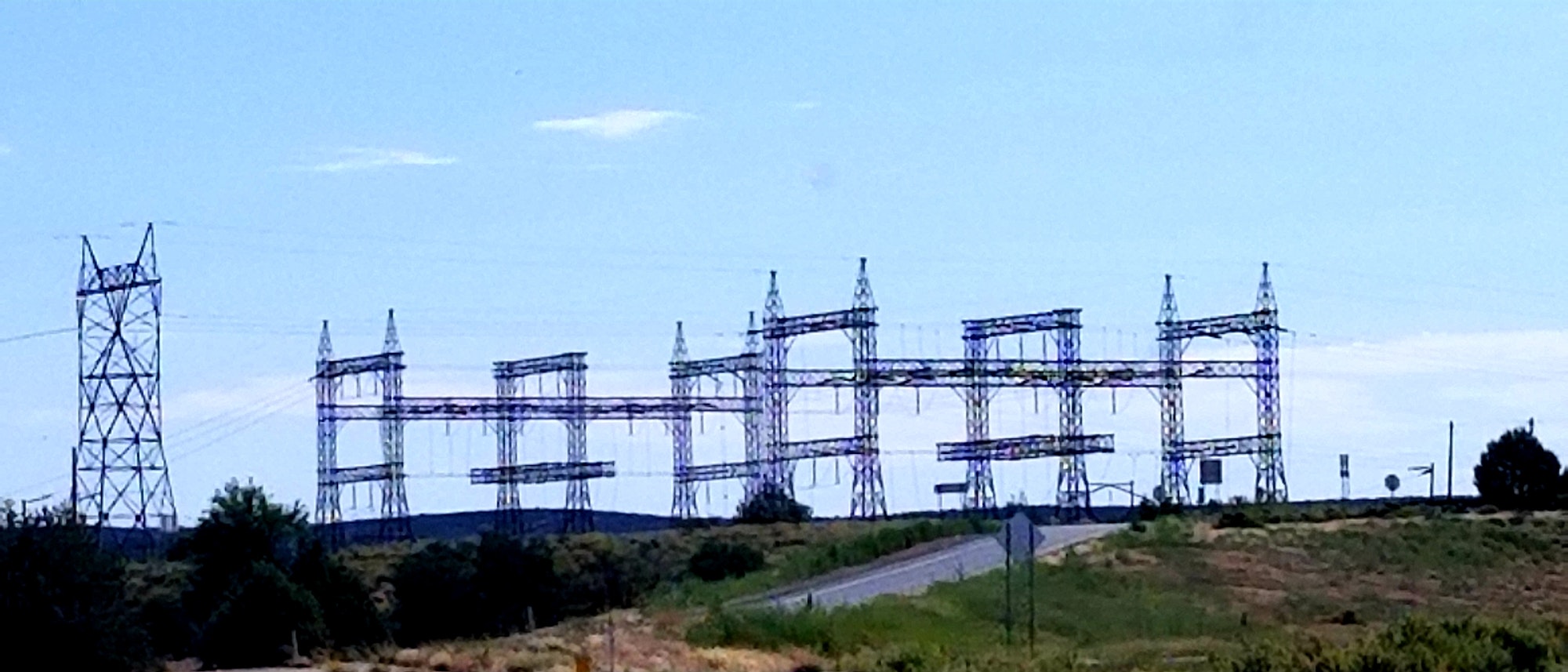- Eversource’s $634 million storm bill serves as a stark reminder of our reliance on a vulnerable grid. Choose solar for cleaner energy, reducing reliance on traditional infrastructure and minimizing damage from extreme weather events.
After enduring years of tumultuous storms, both the ones that descend from the heavens and the political storms surrounding Eversource’s electricity provision in Connecticut, we were always aware that the time would come for the bills to be settled. Now, the moment of financial reckoning has arrived for electric customers affected by the storms spanning from 2018 to 2021.
By the conclusion of 2023, Eversource will be presenting invoices totaling $634 million to regulators. These invoices will be for storm recovery and preparation costs incurred over a span of four years. This substantial amount reflects the expenses associated with 24 “catastrophic events,” as well as eight predicted storms that ultimately did not require extraordinary recovery efforts.
In total, the residential ratepayers would bear the cost of $634 million, averaging at $5 per month over a 6-year period. Typically, Eversource incorporates these storm costs into its billing, subject to approval by state regulators. This amounts to an additional $360 burden for an average household, in addition to the regular charges for transmission, distribution, and the cost of electricity itself.
Two storms were responsible for more than half of the excess cost. In August 2020, Isaias swept through Connecticut, leaving behind a hefty price tag of $232 million. Eversource’s performance during that tumultuous period resulted in a significant fine and prompted reforms in the company’s approach to preparing for severe weather conditions.
On September 1, 2021, one year later, Ida resulted in restoration costs of $139 million for Eversource, as stated in documents that the utility intends to submit to the Public Utilities Regulatory Authority.
In addition to the recent bills related to the 2018-21 storms, Eversource has incurred an additional $400 million in extraordinary storm costs over the past two years. A high-ranking executive responsible for rates and regulatory reviews shared this information with me earlier this week. While I don’t typically remember specific weather events, except for the unforgettable October snowstorm in 2011 when trees came crashing down, I requested Eversource to provide a breakdown of these costs.
That’s an impressive sum of $1 billion and still growing, which we’ll be obligated to start paying from January 1, 2025 onwards. It surpasses our previous expenditure by a significant margin, no doubt.
“We have observed this recurring pattern,” stated Doug Horton, Eversource’s Vice President of Distribution Rates and Regulatory Requirements. “It is an unfortunate trend marked by escalating expenses and intensifying storms.”
Unveiling the Escalating Expenses of Storms
What’s causing this surge? There are three primary factors. Firstly, as the planet warms, we witness an increase in not only highly intense storms but also in their frequency. That’s precisely why we refer to it as climate change.
The other two reasons are closely intertwined. In the modern era, customers have little tolerance for even short power outages. Additionally, Eversource has faced scrutiny from regulators and lawmakers due to operational and communication issues. Following the Isaias storm in 2020, during the pandemic, Governor Ned Lamont expressed his frustration by visiting the company’s Berlin offices, meeting with the CEO, and holding a press conference on the front lawn. He was accompanied by Marissa Gillett, whom he handpicked as the new head of PURA (Public Utilities Regulatory Authority).
The outcome: Eversource settled for a substantial amount of $103 million, borne by the shareholders rather than the ratepayers. Additionally, implementing the Take Back the Grid Act brought about legislative reforms, tightening regulations on storm preparedness and imposing stricter penalties for inadequate recovery times. As part of Eversource’s enhanced emergency response plan, crews are now deployed on the ground before the arrival of a storm in the state. However, it is important to note that these improvements come at a significant cost.
“It was a necessary step. We made a significant financial investment to signal our dedication to the state of Connecticut,” Horton explained. “We are taking proactive measures to prepare for potential storms earlier in the planning phase… The expenses associated with such events have seen an upward trend.”
While Horton acknowledged that the legislation played a role, he emphasized that it wasn’t a definitive turning point that prompted the company to increase its storm spending. Let’s not delve into that debate. The reality is that the costs have risen recently to achieve the desired level of service.
Last week’s severe storm wreaked havoc in the eastern part of the state, inundating the region with heavy rainfall and leaving behind a trail of destruction. The extensive recovery efforts that will follow are estimated to cost millions of dollars. Eversource, however, managed to restore power to approximately 189,000 affected households, with an impressive 170,000 outages resolved within a mere 24 hours after the storm subsided.
Now, think back exactly a week earlier. There was a storm forecast. It didn’t hit hard at all. But it, too, required advance prep that cost money. “The preparation leading up to it was identical,” Horton said.
So this $634 million adds up to an unwelcome but not unexpected bill coming due for some hefty storms in a state that already has high distribution costs because we have density, overhead lines, and lots of old trees.
Breaking down the storm costs
The Forceful 14: CT storms that cost $10M+ in 2018-21
DATE STORM COST
Aug. 4, 2020 Isaias $232M
Sept. 1, 2021 Ida $139M
Aug. 21, 2021 Henri $23M
Oct. 31-Nov. 1 2019 Wind/rain $23M
Aug. 21, 2020 Thunderstorms $22M
Dec. 25, 2020 Wind/rain $21M
April 13, 2020 Wind/rain $19M
Jan. 20, 2019 Freezing rain/wind $16M
July 9, 2021 Elsa $14M
Oct. 17-18, 2019 Wind/rain $11.6M
Nov. 12, 2021 Wind/rain $11.4M
Nov. 15, 2020 Rain/wind $11.2M
Nov. 30, 2020 Rain/wind $10.4M
March 2, 2021 Rain/wind $10.1M
Analysis of this submission reveals that over the course of four years, from 2018 to 2021, a total of 14 distinct storms incurred recovery expenses surpassing $10 million. Among these storms were Isaias and Ida. Notably, most of the expenditure, exceeding $500 million, was allocated to out-of-state crews. These crews primarily consisted of line workers, although there were also individuals specializing in tree-related tasks.
According to Eversource records, direct labor costs, including overtime for their employees, amounted to $73 million.
The submission will initiate a prudency review, during which PURA will assess the justification of each expense. While this process has typically been routine in the past, under Gillett’s leadership, PURA has taken a much more stringent stance toward utilities. Therefore, it remains to be seen how they will approach this particular case. Horton expressed a high level of confidence that the expenses, which have already undergone scrutiny by an external firm, will be proven legitimate.
This surpasses the previous Eversource invoice for catastrophic storms, amounting to $180 million in 2018. Moreover, it even exceeds the 2013 assessment of $414 million ($544 million adjusted for inflation) — a figure that included the impact of Super Storm Sandy, Tropical Storm Irene, and the October snowstorm, which left hundreds of thousands without power for over a week.
Under normal circumstances, the payments would commence in the subsequent rate period following the rate case. However, considering the potential delay of several years, Eversource is seeking approval from PURA to initiate storm payments of $50 million annually starting from January 1, 2025. This arrangement would not only result in estimated savings of up to $30 million in carrying costs for ratepayers but also expedite the disbursement of funds for Eversource.
This review will undoubtedly spark a debate on the permissible level of storm costs that the state should include in our standard rates. Currently, the allotted amount of $6 million per year seems comically inadequate. It is worth noting that Massachusetts and New Hampshire have already increased their set-aside allowances, and Connecticut is expected to follow suit. The question at hand is not whether to raise the allotment, but rather how high it should be raised.




